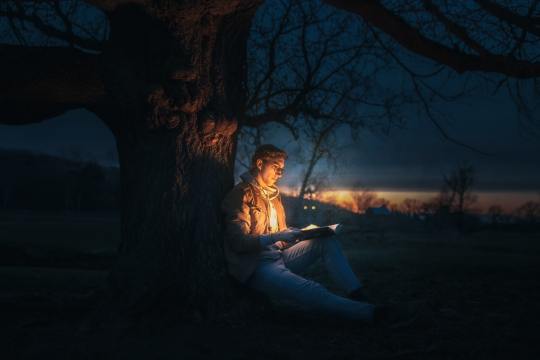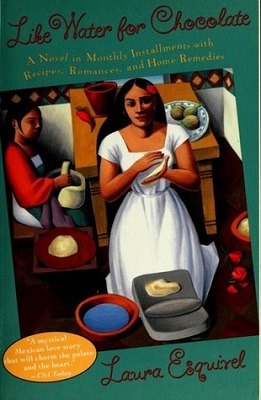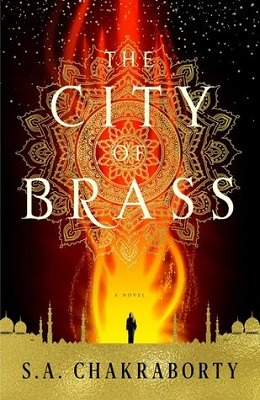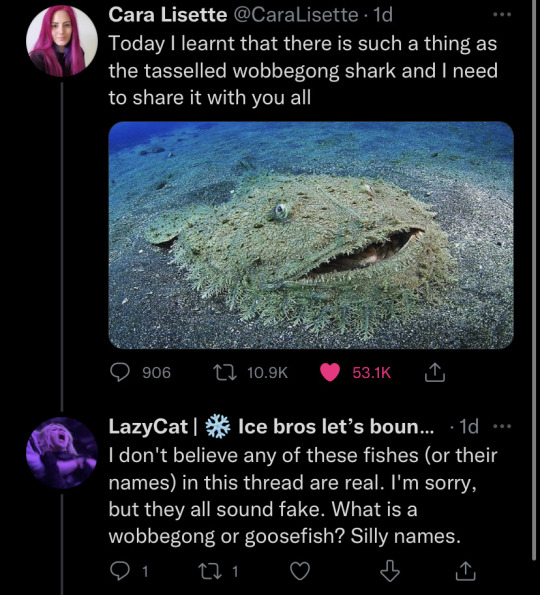#sociopolitical is lemon difficult
Explore tagged Tumblr posts
Text
In case anyone was wondering about what we mean when we say rainbow capitalism is a barometer or broader LGBTQ+ acceptance:
78 notes
·
View notes
Text
"Be fair, be kind, stand up for people who are weaker than you even when it's hard."
Turns out the people asking who radicalized us did it themselves.
"Who radicalized you"
Actually I was taught at home that it's rude to be shitty at other people for no reason, and then some americans decided that this is a radical political ideology.
47K notes
·
View notes
Text
I would like to remind conservative minorities, especially but not limited to LGBTQueer+ folx, of an important fact about conservative parties and coalitions.
They will get around to you.
Maybe you perform respectability politics well enough for them now, maybe you're really in it for a set of reasons you see as rational and defensible. Maybe it makes living with your conservative family something you can tolerate. Maybe you just don't like taxes.
But they really do not give one single fuck about your personhood.
No fault divorce is back up for debate now.
Gay marriage is back up for debate now.
Transgender children, teens, and adults have had their rights under siege for years now.
Maternal and infant mortality have skyrocketed since the overturn of Roe v Wade.
Birth control without the husband's consent is back on the table.
Birth control in general is back on the table.
And hey, remember Justice Clarence Thomas taking all those expensiveass vacations with his January 6er wife and Lobbypants McMoneybags, in which they (paraphrase) "absolutely did not speak about any kind of court business at all nosireebob"?
Alabama just gerrymandered around a miracle of a supreme court decision (against Alabama) calling for two Black majority districts. Alabama produced only Black majority district.
From wedding cakes to fertility clinics to pharmacies, queer people and single people (mostly of childbearing potential) are denied services as business win back the "right" to discriminate against protected classes on the basis of they want to impose their religion on others.
You know what you can't get in Missouri as an adult? Gender affirming care.
Let's not even talk about the slavery loophole in the 14th amendment ("except as punishment for a crimw"), unclosed after 155 years.
(You can make anything illegal.)
And here's the thing, I'm not crazy about the democratic party, either. It's centrist on a good day and spineless almost every day.
But, well. Have a hypothetical.
Give it two years, some rapist (probably white, probably in Texas) is going to sue his victim for having a birth control device which may prevent implantation of a fertilized egg. Probably a long term device like an implant or IUD.
He stands a fair chance of winning punitive damages in civil court. He stands a fair chance of having his victim convicted of feticide and imprisoned in criminal court.
You may think you're safe because he only punches walls, he's never hit you, you make the right noises and carry the right picket signs and keep the books that uplift children of color out of the hands of any children at all.
But the right—the people you're electing, the people you're putting into power?
They want you gone as much as they want liberal degenerates like me and the people like me gone.
And they may get to me and mine first, but honey.
They will get to you.
And I hope you're able to get somewhere safe, and fast, when they come.
#sociopolitical is lemon difficult#i also hate the second motherfucking amendment#we are sending babies to pre-k in tac vests#but guns aren't a problem#guns aren't a problem my ass
14 notes
·
View notes
Text
Five Exceptional Fantasy Books Based in Non-European Myth

Photo by Josh Hild
Don’t misunderstand me: I love reading well-written fantasy with roots in the familiar Celtic and English folklore of my childhood, but with the vast majority of High Fantasy being set in worlds closely akin to Medieval Europe, and a large amount of of Mythic Fiction drawing on legends of similar origin, sometimes the ground begins to feel too well trodden. There is, after all, an entire world of lore out there to draw from. That’s why I’m always thrilled to find excellent works of what I call “the Realistic Sub-Genres of Fantasy” based in or inspired by myths from other cultures. Such books not only support inclusiveness, but also expand readers’ experiences with lore and provide a wide range of new, exciting realities to explore. So, if you are looking for something different in the realm of Fantasy, the following novels will provide a breath of fresh air.

The Golem and the Jinni by Helene Wrecker
In this beautifully written novel, Wrecker draws on both Middle-Eastern and Jewish mythology to tell the stories of two unwilling immigrants in Edwardian New York and the unlikely friendship that springs up between them. Chava, an unusually lifelike golem created for peculiar purposes, has only days worth of memories and is practically childlike in her innocence. Ahmad the Jinni has lived for centuries, but is trying to reclaim his forgotten past. The former is as steady and calm as the earth she’s made from while the latter is as volatile and free-spirited as the fire within him. Both must learn to live in an unfamiliar new culture and find their places in a city too modern for myths even as they hide their true natures. It’s a wonderful metaphor for the experiences of immigrants everywhere, who often find themselves feeling like outsiders—isolated and even overwhelmed— as they struggle to adapt to life in an alien society.
Full of memorable characters, vivid descriptions, and interesting twists, The Golem and the Jinni takes readers on a journey that is driven as much by internal conflict as external action. The setting of 1900’s Manhattan is well-researched and spectacular in its detail. Wrecker blends two old-world mythologies into the relatively modern Edwardian world with a deft hand. The result is not only fascinating, but also serves to illustrate the common early-twentieth-century experience of an immigrant past colliding with an American future.

The Tail of the Blue Bird by Nii Ayikwei Parkes
One part Detective Mystery and one part Magical Realism, this novel invites readers to experience modern-day Ghana in a way that is both authentic and profound. When Kayo, a forensic pathologist just beginning his career, is pushed into investigating a suspected murder in the rural village of Sonokrom, the last thing he expects is to have a life-changing experience. Soon, however, he gets the acute sense that the villagers may know more than they’re letting on. When all of the latest scientific and investigative techniques fail him, even as odd occurrences keep dogging his steps, Kayo is finally forced to accept that there is something stranger than he thought about this case. Solving the crime will require more than intelligence and deduction; it will require setting his disbelief aside and taking the traditional tales and folklore of an old hunter seriously. Because whatever is happening in Sonokrom, it isn’t entirely natural.
This novel is brilliant not only because of its deep understanding of Ghanaian society and realistic setting, but also because of Parkes writing style. The narrative is gorgeously lyrical and everything within it is described with a keen, insightful eye. The dialogue is full of local color, and while some may find the pidgin English and native colloquialisms difficult to follow, I found that the context was usually enough to explain any unfamiliar terms. Sometimes the narrative feels a little dreamlike, but that is exactly the way great Magical Realism should be. The Tail of the Blue Bird insistently tugs readers to a place where reality intertwines with myth and magic, all while providing an authentic taste of Ghanaian culture.

The Deer and the Cauldron by Jin Yong
During the reign of Manchu Emperor Kang Xi, China is in a state of barely-controlled sociopolitical unrest. Many of the older generation remember the previous dynasty, and there still remain vestiges of a resistance movement hidden among the populace. As his forces continue to hunt down the malefactors, called the Triad Societies, the boy-emperor turns to his unlikely friend and ally: a young rascal known only as Trinket. This protagonist is a study in contrasts: lazy yet ambitious, cunning yet humorous, roguish yet likable, foul-mouthed yet persuasive. Born in a brothel, Trinket has made his way by his wits alone. At age twelve, he accidentally sneaked into the Forbidden City—a bizarre occurrence in itself—afterward befriending Kang Xi. Now, rising quickly through the ranks, he is on a mission to (ostensibly) find and weed out the Triad Societies, and he uses the opportunity to infiltrate various organizations, playing their leaders against one another for his own gain. With a dangerous conspiracy brewing in the Forbidden City itself, however, he is forced to choose sides and decide what is most important to him: friendship, fortune, or freedom. Supernatural occurrences, daring escapades, and moments of deep introspection abound as Trinket struggles to navigate the perilous maze his life has become.
This novel is like a gemstone: bright, alluring, and many faceted. At times it may seem somewhat simple on the surface, but looking closer reveals new depths and multiple layers. Full of intrigue, action, horror, and even laughs, The Deer and the Cauldron mirrors not only the complexities of its setting, but those of the China the author himself knew during the Communist revolution. By blending together history, fantasy, realism, humor, and subtle political commentary, Yong not only beautifully captures these social intricacies but also creates a narrative that is as thoroughly engaging as it is unapologetically unique.

Like Water for Chocolate by Laura Esquivel
Magical realism related to food has almost become a movement in itself, with novels like Aimee Bender’s The Particular Sadness of Lemon Cake, Joanne Harris’ Chocolat, and Sarah Addison Allen’s Garden Spells all finding their places in readers’ hearts. Originally published in 1992, Like Water for Chocolate helped create this fascinating trend, and it has become something of a modern classic in the fantasy genre.
The narrative centers around Tita de la Garza, a mid-twentieth century Mexican woman possessing deep sensitivity, a strong will, and a special talent for cooking. Born prematurely, Tita arrived in her family’s kitchen, tears already in her eyes. It is in that room where she spends most of her childhood, being nurtured and taught by the elderly cook, Nacha. The relationship that flourishes between Tita and her caregiver is a special gift, as it provides the girl not only with the compassion and support her own mother denies, but also with a passion and skill for creating incredible, mouth-watering dishes. At Nacha’s side, Tita learns the secrets of life and cookery, but she also learns one terrible fact: thanks to a family tradition, she is destined never to have love, marriage, or a child of her own. Her fate, rather, is to care for her tyrannical widowed mother, Mama Elena, until the day the older woman dies. With a vibrant, independent spirit, sixteen-year-old Tita flouts this rule, falling deeply in love with a man named Pedro who asks for, and is denied, her hand in marriage. Undaunted, the young man agrees to wed one of Tita’s older sisters, Rosaura, instead, as he believes this to be the only way he can be close to the woman he loves. Thus begins a life-long struggle between freedom and tradition, love and duty, which is peppered throughout with supernatural events and delicious cuisine. So great is her skill in cooking that the meals Tita prepares take on magical qualities all their own, reflecting and amplifying her emotions upon everyone who enjoys them. Controlled and confined for much of her existence, food becomes her outlet for all the things she cannot say or do. The narrative itself echoes this, by turns as spicy, sweet, and bitter as the flavors Tita combines. At its heart, this is as much a tale about how important the simple things, like a good meal, can be as it is a story about a woman determined to be her own person and choose her own fate.
Cuisine is fundamental to this novel, with recipes woven throughout the narrative, but that is only a part of its charm. In the English translation, the language is beautiful in its simplicity. The characters often reveal hidden depths, especially as Tita grows up and is able to better understand the people around her. Heartfelt in its joys and sorrows, Like Water for Chocolate glows with cultural flavor and a sense of wonder. It’s a feast for the spirit, and like an exquisite meal, it never fails to surprise those who enjoy it.

The City of Brass by S. A. Chakraborty
When I first read this novel, I found the early chapters enjoyable and engaging, but felt the story was no more than a typical, if especially well-written, work of mythic fiction. The deeper I got into the narrative, however, the more wrong I was proven. The City of Brass is anything but ordinary. While basing her work in Middle-Eastern lore and history, Chakraborty nonetheless manages to create a setting and story that are both wonderfully unique. Lush, detailed, and bursting with magic and intrigue, this book spans the lines between several sub-genres of fantasy without ever losing its balance.
Beginning in eighteenth-century Egypt, the narrative follows a quick-witted antiheroine. Nahri doesn’t live by the rules of her society. She doesn’t believe in magic or fate or even religion. Orphaned for most of her life, survival has required her to become a con artist and a thief. As a result, she is practical and pragmatic, a realist who has never even considered donning rose-colored glasses, and the last person who would ever expect anything supernatural to occur. Which, of course, means that it does, but the way in which it is handled is intricate and interesting enough not to feel trite. When Nahri’s latest con—a ceremony she is pretending to perform and doesn’t believe in even slightly—goes awry, and the cynical young woman finds herself face to face with a Daeva. Magical beings, it transpires, are real after all, and this one is furious. To both of their dismay, he’s also bound to Nahri, who soon realizes that he has an agenda of his own. In return for rescuing her (and refraining from killing her himself) Dara, the Daeva warrior Nahri accidentally summoned, wants her to pull of the biggest con of her life: pretending to be the half-human heir to the throne of his people. Worse still, she soon realizes that Dara, whose mentality sometimes seems a little less-than-stable, actually believes she may be exactly who he claims. He has something planned, and his intentions may not be in her best interest. Dragged unwillingly into a strange world of court intrigue, danger, social upheaval, and magic, Nahri quickly discovers that some things remain familiar. People are ruled by prejudices, the strong prey on the weak, and she can’t fully trust anyone. The stakes, however, are higher than ever, and Nahri will need all of her wits, cunning, and audacity if she wants to survive.
This novel was thoroughly enjoyable, and in fact prompted me to buy the following books in the trilogy as they became available. Chakraborty’s style is lyrical, her world building is superb, her plot is intricate, and her characters are well-developed. She not only frames unfamiliar words and ideas is easily-comprehensible contexts, but weaves those explanations smoothly into the narrative. The culture, mythology, and history surrounding her tale are all carefully researched, but the tale itself is nonetheless unique. What begins feeling like a fairly ordinary mythic fiction novel will pleasantly exceed readers’ expectations.
So, while we, as fantasy readers, love the works of authors like J. R. R. Tolkien, Marion Zimmer Bradley, and Charles de Lint, there is also a plethora of other enchanting books to enjoy. Exploring magical realism and mythic fiction based in cultures and folklore from all around the globe ensures that our to-read lists will always hold something unexpected and exciting to surprise us. So, if you’re starting to feel like you’re in a bit of a reading rut, or if you’re simply looking to expand your horizons, open up new realms of imagination by opening up one of the novels above. Who knows see where it will lead you? You may just discover a new favorite to add to your bookshelf. Happy reading!
#book#books#novel#novels#fantasy#mythic fiction#magical realism#non-European#culture#cultural#review#reviews#fantasy literature#literature#book lover#book lovers#bookworm#international#suggestino#suggestions#African#Mexican#Middle-Eastern#myth#mythology#legend#lore#Asian#Chinese#Central American
9 notes
·
View notes
Text
Pokemon has been addressed so I'm going to come in as hick by heritage and say the quiet thing out loud.
All y'all rebel pride southerners have a shit heritage.
You don't get to be proud of your three and four times great grandparents for fighting a wholeass war over "the states' right" to "decide for themselves" whether or not it's okay to enslave and traffick Black people.
That goes double for Texans; your grands did it fucking twice, because when Mexico showed up and found y'all's slaver ancestors enslaving people, Mexico said "yeah, we don't do that here"* and your state heroes went "yeah actually we're going to keep up with the human trafficking"
*Actually, México said something like, "¡Aquí no hacemos eso!” but they'd already had the "you're in México, speak Spanish"/"actually we'd rather not" chat with your unlawful and undocumented white american emigrant ancestors, white Texas.

90K notes
·
View notes
Text
Five important exhibitions to see in Paris: Art, history and politics
“Holocaust and Comic Books” at the Holocaust Memorial – until October 30, 2017
Horst Rosenthal, Mickey Mouse in the Gurs Camp, 1942. Mémorial de la Shoah collection.
Art Spiegelman’s Maus aside, the subject of Holocaust as represented in comic books and graphic novels has remained largely unexamined. Now a heartrendingly beautiful exhibition, “Holocaust and Comic Books” at the Holocaust Memorial (Memorial de la Shoah) in Paris, sheds new light on the often-overlooked representation of this historical tragedy in comics and graphic novels. The exhibition begins with the first eyewitness and victim testimonies of the genocide, including the bittersweet Mickey Mouse in the Gurs Camp, a handbound album by Horse Rosenthal while he was in the French concentration camps. It then goes on to map the gradual political, social and aesthetic changes in the depiction of the Holocaust with an exceptional selection of over 200 rare and original works spanning over a period of 75 years. These include the early anthropomorphisms and gingerly references to the Holocaust in superhero comics to the later use of graphic novels as a means to communicate and educate about the difficult issues of historical tragedies, identity and memories. It is a solemn, well-explained exploration of a subject and a medium quite frequently obscured or forgotten in contemporary sociopolitical and cultural discourse. Details>>
“21 Rue la Boétie” at Musée Maillol – until July 23, 2017
Georges Braque (1882-1963), Fruit on a Tablecloth, 1924. Fondation Collection E.G. Bührle, Zurich. © ADAGP, Paris, 2017, © Fondation Collection E. G. Bührle, Zurich.
Based on the book My Grandfather’s Gallery: A Family Memoir of Art and War (originally published in French as 21 Rue la Boétie) by Anne Sinclair, the Musée Maillol exhibition traces the remarkable story of Sinclair’s grandfather, Paul Rosenberg (1881-1959). One of the most influential art dealers of the first half of the 20th century, Rosenberg was a friend and principal dealer of Picasso and brought many of the modern art masters, including Matisse, Léger, Braque and Marie Laurencin, to wider public attention. The exhibition recreates the history of 21, Rue la Boétie, Rosenberg’s family house and art gallery which once served some of the most prominent modern artists and was ironically occupied in 1941 to house the Institute for the Study of Jewish and Ethno-Racial Questions. On view are over sixty rarely seen works that mark the emergence of modern art and the shift of international art market from Paris to New York, but also a detailed section documenting ‘The Great Exhibition of Modern Art’, held at the same time as the exhibition on what was considered as ‘degenerate art’. Details>>
“Ciao Italia!” at the National Museum of the History of Immigration – until September 10, 2017
L’heure du café. © Alain Fleischer.
With Ciao Italia!, the National Museum of the History of Immigration (Musée national de l’histoire de l’immigration) retraces the path of Italian immigration in France starting from the year 1860. Spanning across a century, the exhibition does not merely emphasise on the Italian integration and contribution to the industry and culture in France – automobiles, cinema, arts, sports, commerce and industry – but also deals with difficult issues of exclusion, discrimination, rejection, xenophobia and violence (such as during the massacre of Aigues-Mortes in 1893) faced by Italian migrants in France. With some 400 exhibits on display – artworks, objects, archival documents, posters and films – the exhibition is a richly documented survey of one of the greatest waves of immigration to France. The museum is situated on the edge of Bois de Vincennes and is housed in the Palais de la Porte Dorée, also home to the Paris’ tropical aquarium. Curiously enough, the building was used for the International Colonial Exposition of 1931, and its imposing facade, created by Alfred Janniot, is a sculpted eulogy to French colonial rule in Africa, Asia, the Antilles and Oceania. Details>>
“Rock the Kasbah!” at Institut des Cultures d’Islam – until July 30, 2017
Angelica Mesiti, Nakh Removed, Video, 2015. © Angelica Mesiti courtesy the artist and Galerie Allen, Paris and Anna Schwartz Gallery Melbourne.
British punk rock band The Clash’s wrote their cult song Rock the Casbah after Ayatollah Khomeini banned rock music in Iran. The song today is the inspiration behind Institut des Cultures d’Islam’s exhibition Rock the Kasbah!, which explores the effect music and sounds have on our bodies and minds. The exhibition brings together some highly engaging musical, art, photographic and film works by artists from Sub-Saharan Africa, South-East Asia, Europe, Middle-East and the United States in an attempt to examine music’s potential as an instrument of protest, its spiritual dimension and its capacity to make our bodies move. It also brings into perspective the Muslim practice of public diffusion of prayer sounds and the manner in which it influences individual and collective behaviour. Some highlights from the exhibition include Angelica Mesiti’s video of four women absorbed in a hypnotising ‘dance of the hair’ and Siaka Soppo Traoré’s photographs of break dancers frozen in mid-air. In a profound but disturbing video – This Lemon Tastes of Apple – shot in the streets of Sulaymaniyah in Iraqi Kurdistan, an unflinching Hiwa K plays harmonica in the face of a brutal attempt to repress a public demonstration. The exhibition is accompanied by several cultural events, concerts – Berber rock, Senegalese hip-hop, Palestinian rap – as well as conferences, shows, musical workshops and film screenings (the programme is available here). While you are there, do try the excellent food served in their cafeteria on Rue Léon and buy the honey from the hives on ICI Goutte d’or’s roof available in their boutiques. Details>>
Michel Journiac at Maison Européenne de la Photographie – until June 18, 2017
Michel Journiac, L’inceste, N°1 : fils-fille-amante / filsgarçon-amant / fils-voyeur, 1975. © Michel Journiac / ADAGP. Collection Maison Européenne de la Photographie, Paris.
Michel Journiac was one of the key founders of the art corporel (body art) movement in France in the 1970s. Using body as the medium, Journiac’s work questioned prevailing notions of sexuality, identity, morality and the sacred. His works, convening gender, body, blood and religion, are by no means easy to look at and this is not an exhibition for those looking for beautiful, comforting art. But that exactly was the point of Journiac’s work produced in a post-1968 France, a period that saw the emergence of various countercultures and subversive art against cultural, religious, political and social ‘systems’. His series 24h de la vie d’une femme 24 hours in the life of an ordinary woman, where he poses as a working married woman is a biting satire on the gender stereotypes promoted by popular French women’s magazines. The best known of his performances, Messe pour un corps (Mass for a body, 1969) held at the Galerie Templon after the 1968 protests, involved Journiac, an ex-seminarian, as the priest reading from the Bible and handing out blood sausage made with his own blood. His Hommage a Freud (Homage to Freud, 1972) and Incest (1974) is a social parody him cross-dressed as himself, his father and his mother. These issues remain as important today as they were when Journiac raised them. This is an exhibition that should be seen but go only if the sight of blood does not make you nauseous. On a separate note, some of the works by Michel Journiac and his contemporaries can be seen at the Maison Rouge’s ‘The French Spirit: Countercultures 1969-1989‘ – an exhibition recommended for those interested in knowing more about the social and cultural developments in the aftermath of the 1968 revolts. Details>>
The post Five important exhibitions to see in Paris: Art, history and politics appeared first on URBAN MISHMASH | Paris.
from URBAN MISHMASH | Paris https://www.urbanmishmash.com/paris/art-culture/exhibitions/must-see-exhibitions-art-history/
0 notes
Text
Scroll far enough back in the history of a radical anarchist and you're almost guaranteed to find an anti-Semitism floating on the surface of their political Identity like it's the ding dang garbage patch of the Pacific Ocean.
4 notes
·
View notes
Text
Works with characters of color, too. Doubly if they're women. Keep bumping the exponential shrinkage for additional axes of real life oppression.
fandom will see a female character with the most interesting backstory and inner turmoil in the entire media and be like “…anyways. where’s the closest man we can pretend has the exact problems she has”
32K notes
·
View notes
Text
"a penthouse nest, in a tree? For a single adoptive father like me? In THIS economy?"
-- Murphy America, Bald Eagle Dad


75K notes
·
View notes
Text
The vast and overwhelming majority of American farms are corporate these days, and many utilize prison labor for tasks which cannot be automated. (i am too tired to check numbers; google "prison lavor farm Industry usa" and check them yourself.)
You know why prison labor us so cheap for corporate farms and other manufacturers who slap "made in america" stickers on their merch? Because prisoners are enslaved people living in a state of enslavement. They are experiencing slavery legally under the 14th Amendment, "as punishment for a crime."
Why can't someone who wants to forgo college and become a farmer break into the farming industry?
Because he is literally competing against the unbeatably cheap labor provided by enslaving people. I'm the indebted former college student and this guy is my ally and we cannot rest until every incarcerated person living under slavery *is no longer being trafficked and enslaved by our state and federal governments and their contract-holders.*


Republicans do not understand, nor value, society or community.
3K notes
·
View notes
Text
Hey @/lazycat on Twitter, it is a little bit xenophobic and alottabit asshole to mock words from other but especially indigenous languages, which are often at risk of language extinction due to ongoing colonial genocide. And people genocide of the people who speak them.


Sincerely,
Lemonsharks from Chicago, on unceded Odawa, Ojibwe, and Potawatomi land.


Babe, wake up. New benefit to being a marine biologist just dropped!
22K notes
·
View notes
Text
Smaller would be awesome for digital downloads and print at home on sticker paper options for bullet journaling; 12x9 isway better for a wall calendar, imo
Also if you’re including holiday on the calendar it would be doubly awesome to include multiple holiday options (not just American/christian holidays, since the USA isn’t the world and christianity isn’t neutral/secular ), especially for digital downloads.
Maybe release the print version featuring religious time and a half holidays marked like (for a USA example): “December 25: federal holiday”? The people who need to know it’s Christmas already know it’s Christmas, and it would mean a lot to some folks looking to escape the omnipresent christ hegemony to buy Just One Calendar In Their Life that doesn’t assume they’re/we’re christians.
(Christianity isn’t a problem per se, but christianity presented alone as if it’s a neutral/default thing is a problem.)
Apologies for giving you 20+ years of pent up calendar publishing industry rant when you as an indie artist are faaaaaaarr from being even a notable fraction of any kind of problem.
I love your art and I’m totally buying two of your calendars (one for me one for my mom); please keep making art and other things with your art upon it!
would y’all prefer large (12” x 9”) or small (6” x 4.5”) calendars for 2023? 🤨🧐🤔 pls reply thank you!!
84 notes
·
View notes